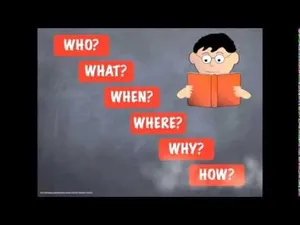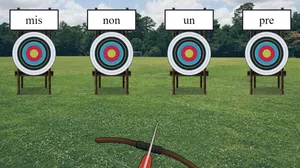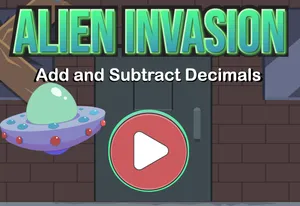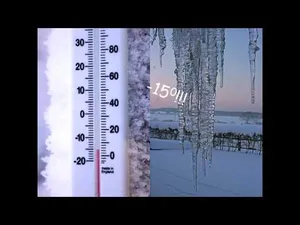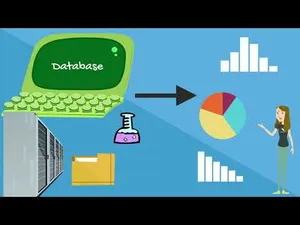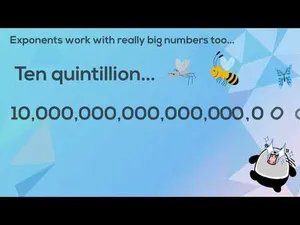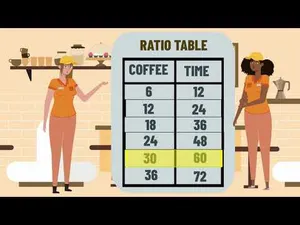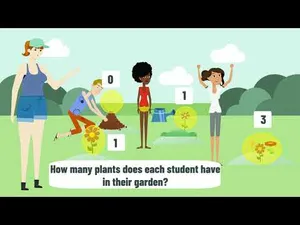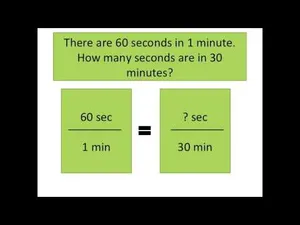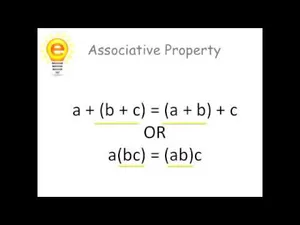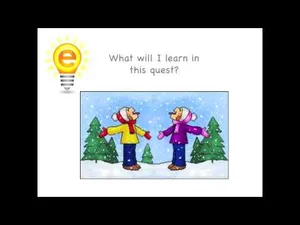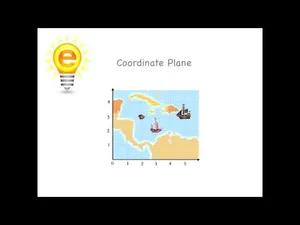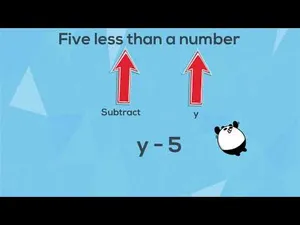Alien Invasion Dividing Fractions
Dividing Fractions
Alien Invasion Decimal Operations
Operations with Decimals
Pet City 6th Grade Decimal Division
Operations with Decimals
Panda Breakout: Least Common Multiples
Common Multiples & Factors
Pet City
Intro to Ratios
Ring Toss Ratios
Intro to Ratios
Space Cube
Intro to Ratios
Using Positive & Negative Numbers
Positive and Negative Numbers
Intro to Data
Center, Spread and Shape
Introduction To Exponents
Evaluating Expressions with Exponents
Intro to Ratio Tables
Ratio Tables
Summarize Sets of Data
Summarizing Data Sets
Intro to Ratios
Intro to Ratios
Intro to Statistical Questions
Intro to Statistics
Learning Percentages
Percent of a Quantity
Using Ratios to Convert Units
Using Ratios to Convert Units
Identifying Equivalent Expressions
Equivalent Expressions
Opposites of Numbers
Opposites of Numbers
Graphing in the Coordinate Plane
Graphing in the Coordinate Plane
Solving Less Than / More Than / Equal To Problems
Writing Expressions
Math Activities and Teaching Resources for 6th Grade
In sixth grade, math takes on a whole new level of excitement! Students will be diving deep into fractions, decimals, and percentages like never before, and using them to solve all sorts of fun problems. They'll also get to flex their geometry skills by exploring the world of angles, lines, and shapes. Don't forget about algebra, where students will get to crack codes and solve puzzles by figuring out the values of different variables.
Enjoy this sampling of instructional videos, games, and activities for your 6th grade classroom!
Some of the skills students will master in eSpark include:
Ratios and Proportional Relationships
- Understand the concept of a ratio and use ratio language to describe a ratio relationship between two quantities.
- Understand the concept of a unit rate a/b associated with a ratio a:b with b is not equal to 0, and use rate language in the context of a ratio relationship.
- Use ratio and rate reasoning to solve real-world and mathematical problems, e.g., by reasoning about tables of equivalent ratios, tape diagrams, double number line diagrams, or equations.
The Number System
- Interpret and compute quotients of fractions, and solve word problems involving division of fractions by fractions, e.g., by using visual fraction models and equations to represent the problem.
- Fluently divide multi-digit numbers using the standard algorithm.
- Find the greatest common factor of two whole numbers less than or equal to 100 and the least common multiple of two whole numbers less than or equal to 12. Use the distributive property to express a sum of two whole numbers 1–100 with a common factor as a multiple of a sum of two whole numbers with no common factor.
- Fluently add, subtract, multiply, and divide multi-digit decimals using the standard algorithm for each operation.
- Understand that positive and negative numbers are used together to describe quantities having opposite directions or values (e.g., temperature above/below zero, elevation above/below sea level, credits/debits, positive/negative electric charge); use positive and negative numbers to represent quantities in real-world contexts, explaining the meaning of 0 in each situation.
- Understand a rational number as a point on the number line. Extend number line diagrams and coordinate axes familiar from previous grades to represent points on the line and in the plane with negative number coordinates.
- Understand ordering and absolute value of rational numbers.
- Solve real-world and mathematical problems by graphing points in all four quadrants of the coordinate plane. Include use of coordinates and absolute value to find distances between points with the same first coordinate or the same second coordinate.
Expressions and Equations
- Write and evaluate numerical expressions involving whole-number exponents.
- Write, read, and evaluate expressions in which letters stand for numbers.
- Apply the properties of operations to generate equivalent expressions.
- Identify when two expressions are equivalent (i.e., when the two expressions name the same number regardless of which value is substituted into them).
- Use variables to represent numbers and write expressions when solving a real-world or mathematical problem; understand that a variable can represent an unknown number, or, depending on the purpose at hand, any number in a specified set.
- Solve real-world and mathematical problems by writing and solving equations of the form x + p = q and px = q for cases in which p, q and x are all nonnegative rational numbers.
Statistics and Probability
- Recognize a statistical question as one that anticipates variability in the data related to the question and accounts for it in the answers.
- Understand that a set of data collected to answer a statistical question has a distribution which can be described by its center, spread, and overall shape.
- Recognize that a measure of center for a numerical data set summarizes all of its values with a single number, while a measure of variation describes how its values vary with a single number.
- Display numerical data in plots on a number line, including dot plots, histograms, and box plots.
- Summarize numerical data sets in relation to their context.
eSpark is truly unique in the world of online learning. Our holistic, student-centered approach blends the proven benefits of play-based learning with systematic, explicit, and direct instruction. It’s proof that learning can be fun, personalized, and effective, all at once!
eSpark meets the criteria for evidence-based interventions under ESSA guidelines, and has been proven in multiple studies to improve student performance in math and reading.
When you sign up for an eSpark account, your students experience these activities via adaptive, differentiated independent pathways and teacher-driven small group assignments. Teachers also have access to detailed usage and progress reports with valuable insights into standards mastery, student growth trends, and intervention opportunities.
With the addition of the game-changing Choice Texts for the 2023-2024 school year, eSpark has cemented its status as the most loved supplemental instruction option for students and teachers alike. Claim your free account today and see the difference for yourself!
